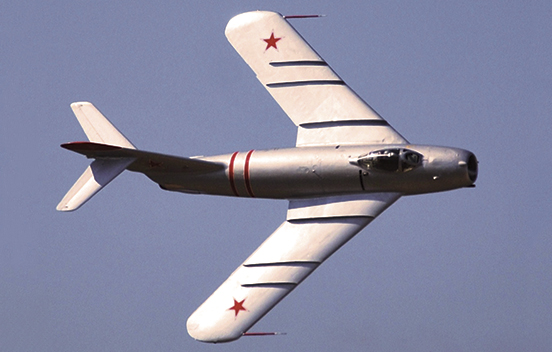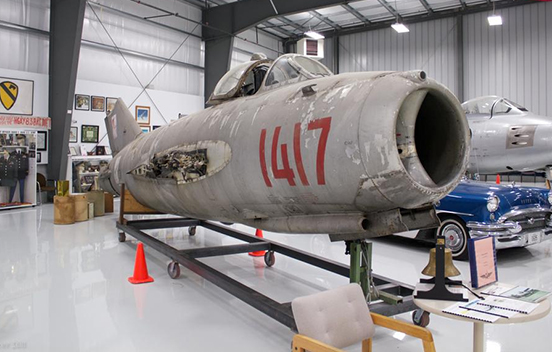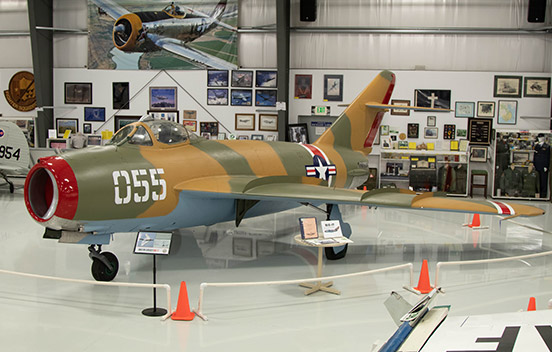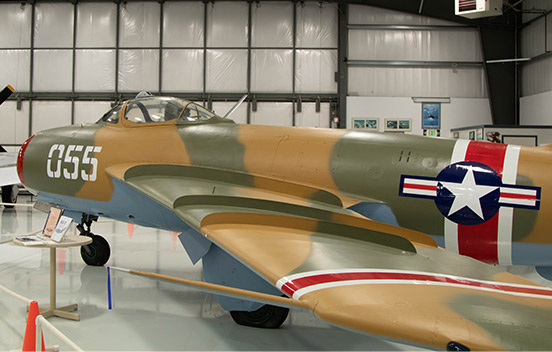MiG-17





Mikoyan Gurevitch MiG-17
Made famous by the Vietnam War, the MiG-17F was the primary enemy aircraft engaged in the skies over Vietnam by U.S. aircraft, such as the A-4,A-7, F-8, B-52, F-100, F-105 and its primary nemesis, the F-4 Phantom II. During that war and up until the F-16 entered service, it was the tightest-turning fighter in the world. When production started in the 1950s, its VK-1F engine made it one of the first production jet fighters in the world with an afterburner.
The MiG-17F can maintain 8g turns (8g = 8 times the force of gravity on the pilot’s body), attain a maximum speed of 715 mph (Mach 1.04), and can climb to 30,000 feet in only 3 minutes, with an initial rate of climb better than 14,000 feet per minute. The MiG-17F was a very nimble fighter that could prove deadly unless respected when engaged by pilots with superior training and tactics such as those used by the U.S. Navy and Air Force. One moment’s complacency when fighting against the MiG-17F could prove fatal. It was flown by over 20 countries, three of which still fly it. Because of its famous heritage and great maneuverability, it makes one of the best air show jets in the world, able to stay in front of the fans while still flying at great speeds.
MiG-17 Specifications
- Built:
Original construction in 1952, former Soviet Union - Engine:
Klimov VK-1F afterburning jet engine - Thrust: 7,452 lbs
- Armament:
2x 23mm NR-23 nose-mounted cannons
1x 37mm N-37 nose-mounted cannon
2x 550 lb bombs
- Length: 37′
- Height: 12’6″
- Wingspan: 31’7″
- Max Weight: 13,386 lbs
- Service Ceiling: 53,296 ft
- Max Speed: 715 mph @ 10,000 ft
- Rate of Climb: 12,800 ft/min


 Opens in new window
Opens in new window  Opens in new window
Opens in new window  Opens in new window
Opens in new window